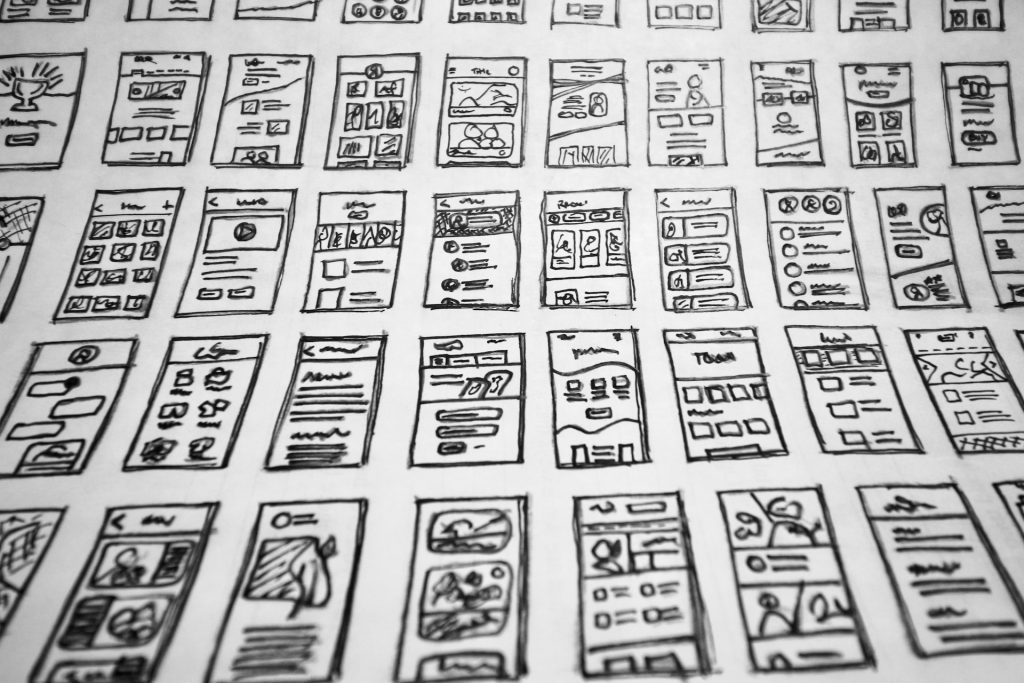
Why Next.js For eCommerce Website Development Is Awesome
Julian Wallis
10 min read

The online marketplace is now faster than ever before, so speed and performance are crucial for the success of eCommerce websites. Customers expect fast-loading pages and seamless user experiences, and any delay or glitch can result in bounced pages and lost sales and revenue. That’s why many eCommerce developers are turning to Next.js, an open-source React framework, to build fast and scalable websites.

Next.js is a popular frontend development framework created by Vercel generally used for building React applications, including eCommerce websites. It provides several features that make it an ideal choice for developing blazingly fast eCommerce websites.
In this article, we’ll explore how Next.js provides the ideal framework for eCommerce website development and the features that make it arguably the best choice for building modern online stores.
Why Use Next.js For eCommerce? 🛒
The real question you ought to be asking is why shouldn’t you use Next.js for building an online store. And truth be told, we can’t think of any! The framework provides everything you need to create an eCommerce website that delivers an incredible online shopping experience for your customers.
Next.Js’s toolkit is especially suitable for developing statically generated eCommerce pages like product and category pages, for instance. Below we’ll look at some of the key features and benefits that Next.js provides that make it stand out from other frontend frameworks for eCommerce.
🌐 Server-Side Rendering (SSR)
Next.js empowers websites with the superpower of server-side rendering, so they can instantly deliver an incomparably faster experience to users. This seamless tech boosts performance and SEO by cutting down time-to-first byte (TTFB) and loading pages in a flash because no one likes waiting around for slow sites anymore.
✂️ Automatic Code Splitting
With Next.js, you don’t have to worry about long time-to-interactive loading times – it works hard behind the scenes to simplify your code and speed up page loads. It smartly analyses which parts of JavaScript are used on each page and only downloads that specific set so users can start using your website faster than ever before.
📈 Incremental Static Regeneration (ISR)
Next.js supports incremental static regeneration, which allows developers to update specific parts of a static page without regenerating the entire page. This improves website performance and reduces the time to update content.
💻 Static Site Generation (SSG)
Next.js takes website performance and security to the next level with its revolutionary static site generation. Unlike traditional approaches, SSG builds HTML at build time instead of on a server or client – reducing attack surfaces while eliminating unnecessary servers for maximum safeguards.

🖼️ Automatic Image Optimisation
Next.js automatically optimises images, reducing their size and improving website performance. It also supports responsive images, lazy loading, and image caching.
🛠️ Built-in TypeScript Support
Next.js has built-in support for TypeScript, a statically typed programming language. TypeScript provides better code organisation, improved error handling, and enhanced code quality, making developing and maintaining eCommerce websites easier.
💁 Easy Deployment
Next.js makes it easy to deploy eCommerce websites to various hosting platforms, including Vercel, Netlify, AWS, and Google Cloud. In addition, it provides a seamless deployment process that reduces downtime and makes it easy to roll back changes if necessary.
🤝 Collaborative Coding
Vercel has introduced Next.js Live, an interactive live coding platform where groups can collaborate on coding, drawing, and communicating via the browser. It is set to revolutionise the level of cooperation between developers and non-technical teams.
🌎 Internationalisation
Foreign expansion is inevitable for any eCommerce store to achieve its true potential. Next.js makes multi-language deployment relatively easy through features such as built-in domain and sub-domain routing and automatic language detection.
Starting from version 10.0.0, Next.js has integrated support for internationalised (i18n) routing. By specifying a range of locales, the default locale, and domain-specific locales, the framework will manage the routing process for you without requiring any additional steps.
Using Next.js With Headless CMS: The Future of eCommerce Development? 🛍️
Coupled eCommerce solutions like WooCommerce and traditional Shopify join both frontend and backend functionalities into one seemingly neat package; however, the reality isn’t as rosy as it looks.
Traditional commerce creates a monolithic structure where every change you make to your back end has repercussions in your front end, making it a non-viable choice for fast-moving brands who want to go global.

In contrast, by embracing headless architecture, developers can use the tools they want to build converting shopping experiences. Next.js and headless CMS make an excellent combination for creating eCommerce websites that are fast, scalable, and flexible. Here are some reasons why and how you should use the framework with a headless CMS for eCommerce websites.
⚠️ Separation of Concerns
With Next.js, eCommerce developers can enjoy a streamlined development framework for their website’s front and back end – leveraging the power of a headless CMS to serve content over an API for simple access without fussing about presentation layer details. This makes building out your store with it delightfully straightforward and more accessible than ever before.
⌛ Faster Development Time & Content Management
Using a headless CMS with Next.js reduces the time spent on backend development, allowing developers to focus on the front end. In addition, headless CMS provides a user-friendly interface for content creators to update content, freeing developers to work on other aspects of the website.
⭐ Better Overall Performance & Load Time
Using Next.js with a headless CMS can improve website performance by reducing load time and page weight. Headless CMS allows developers to fetch only the necessary data, reducing the amount of data that needs to be loaded on the client side.
Next.js, with its server-side rendering capabilities, can deliver fast-loading pages, reducing the time to first byte (TTFB) and improving search engine optimisation (SEO).
⏭️ Enhanced Scalability
Headless CMS has revolutionised how we access information by making managing content across multiple channels and devices a breeze. Due to its compatibility with other headless CMS platforms, Next.js provides a fantastic framework to effortlessly create eCommerce websites capable of handling massive amounts of daily web traffic.
🗺️ Better Navigational Experience
With Next.js and a headless CMS, your eCommerce website can provide dynamic experiences tailored to each user. This advanced approach reduces bounce rates and boosts conversions through smooth navigation that’s still highly personalised.
Next.js Commerce: Built Specifically For Online Stores 💸
If you’re looking for a simpler and faster way to launch your online store in a snap, Next.js Commerce could be your answer! This open-source eCommerce solution developed by Vercel makes it simple and efficient to create a full-fledged storefront with all the essential components: cart handling, secure checkout options—even payment processing.
Next.js Commerce was explicitly created to simplify the process of developing an eCommerce store using the framework. Developing a site from scratch can be technically challenging and time-consuming, which is where Next.js Commerce comes in handy.
Next.js Commerce includes various useful built-in features, such as CSS blocks and API routes, to improve the presentation layer and add backend functionalities without reinventing the wheel.

Some of the other notable features of Next.js Commerce are:
- Server-side rendering and automatic image optimisation for fast page load times and SEO-friendly content.
- Integration with Next.js Analytics, a lighthouse score-based metric tool that provides accurate real-time data on webstore visitors and page interactions.
- A customisable storefront UI that can be styled with CSS or CSS-in-JS libraries like styled-components or Tailwind CSS.
- Built-in support for popular eCommerce platforms like Shopify, BigCommerce, and WooCommerce, and integration with any other CMS.
- A robust data layer that integrates with popular headless CMS platforms like Contentful and Sanity.
- A flexible API that can be customised to meet the needs of your specific eCommerce use case.
Finally, deployment and launching your storefront is simpler than ever before because, with Next.js, all you need to do is create a Git repository, add the necessary integrations, and deploy. From there, you can make the essential changes to the visual layer and add backend functionalities that make sense for your webstore.
Potential Downsides Of Using Next.js In An ECommerce Project 🙅
As with any development framework, there are benefits, and there are downsides. Here are some potential downsides of using Next.js in an eCommerce project:
- Steep Learning Curve: Next.js can be more challenging to learn and use than some other front-end frameworks. Its advanced features, such as server-side rendering and static site generation, may require more technical expertise than what some developers might possess. This can lead to longer development times, learning on the job or a need for more experienced developers on the team.
- Limited Flexibility: The framework is a tad more inflexible than other front-end frameworks in certain aspects. For example, its routing system can be more restrictive, making it harder to implement specific customisations. Additionally, the framework may be less well-suited to some particular use cases or development requirements, which can limit the flexibility of the eCommerce project.
- Overkill for Small Projects: While the framework is well-suited for large and complex eCommerce projects, it may be overkill for smaller projects that don’t require its advanced features. Using it in these cases can lead to unnecessary complexity and development overhead. Remember, the best tool is only the best for some situations.
- Dependent on External Services: Using the framework with a headless CMS can require relying on external services for content management and delivery. This can introduce additional points of failure and potential performance issues, depending on the quality and reliability of the headless CMS.
- Higher Development Costs: Because Next.js is a more advanced framework, it can require more time and resources to develop with more straightforward frameworks. This can lead to higher development costs for eCommerce projects, which may not be feasible for some businesses.
Final Takeaways: Next.js For ECommerce Website Development 👨💻
eCommerce is changing how we shop, and it looks like Next.js and headless CMSs will be trails blazers in enabling a seamless shopping experience for customers worldwide!
After everything we’ve discussed in this article, it’s evident that Next.js is an excellent choice for developing fast and seamless websites for eCommerce purposes. It offers many powerful features that make it an ideal choice for developers looking to create a superior customer experience, from page performance improvements provided by incremental static regeneration to advanced full-static for generating static HTML pages back-to-front while providing easy server-side rendering. Next.js truly has what it takes to become part of your development stack.
If you’re looking for the best possible eCommerce development solution, then why not give Next.js a try? If you have any questions, don’t hesitate to reach out and book a discovery call so that we can help you navigate the process and set your eCommerce store up for success.
Topics
Published On
March 10, 2023

